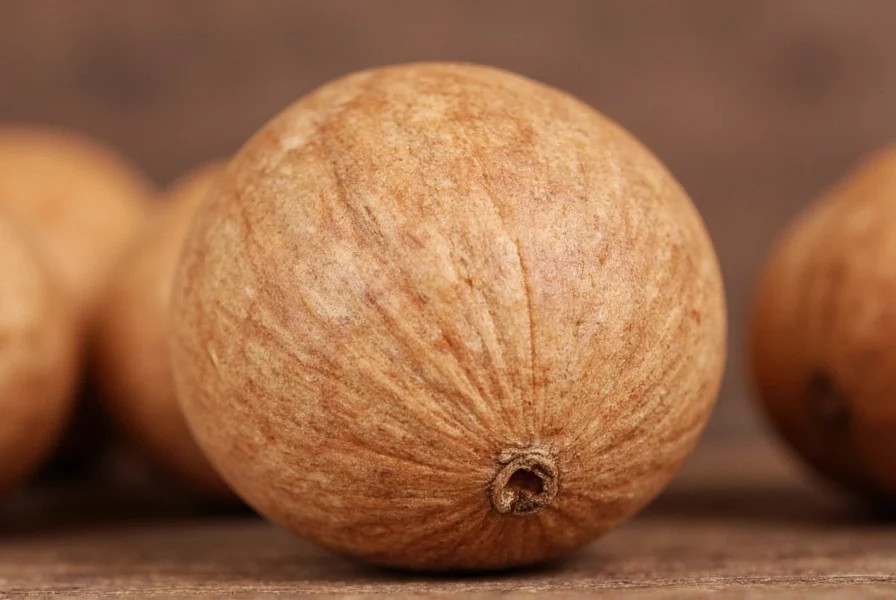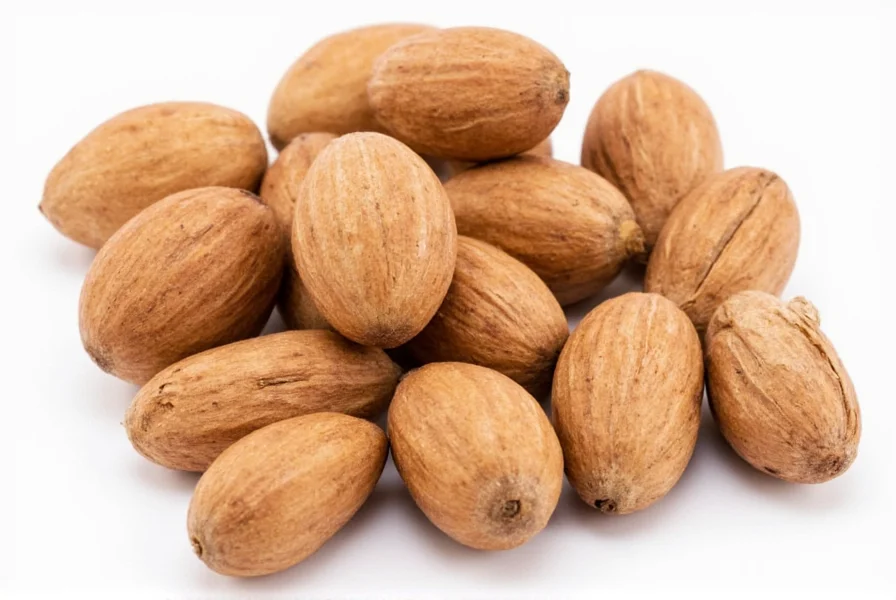Understanding the botanical classification of nutmeg helps clarify why it's frequently mistaken for a tree nut. The Myristica fragrans tree produces a fruit containing a single seed - what we know as nutmeg. The seed is surrounded by a lacy red covering called mace, which is also used as a separate spice. Unlike true tree nuts such as almonds, walnuts, or cashews that develop from the ovary of a flower, nutmeg originates from the seed of a tropical fruit.
Why Nutmeg Isn't Classified as a Tree Nut
The confusion between nutmeg and tree nuts stems primarily from the word "nut" in its name. However, in botanical terms, a "nut" refers to a specific type of fruit with a hard shell and edible seed that doesn't split open to release the seed. True tree nuts like hazelnuts and pecans fit this definition, but nutmeg does not.
| Characteristic | True Tree Nuts | Nutmeg |
|---|---|---|
| Botanical Classification | Hard-shelled fruit containing a single seed | Seed of a tropical fruit |
| Plant Family | Various (e.g., Juglandaceae for walnuts) | Myristicaceae |
| Allergen Profile | Contain specific nut proteins | Different protein structure |
| Common Allergy Cross-Reactivity | High among tree nuts | Minimal with tree nuts |
Nutmeg Allergies vs. Tree Nut Allergies
While nutmeg allergy vs tree nut allergy are distinct conditions, some people wonder about cross-reactivity. Research shows that the proteins in nutmeg differ significantly from those in tree nuts, making cross-reactivity extremely rare. The American College of Allergy, Asthma, and Immunology confirms that people with tree nut allergies can typically consume nutmeg safely.
However, isolated cases of nutmeg allergy do exist, usually presenting as mild reactions like oral allergy syndrome. These reactions stem from nutmeg's specific proteins, not from similarity to tree nut proteins. If you experience symptoms after consuming nutmeg, consult an allergist for proper testing rather than assuming it's related to your tree nut allergy.

Why the Confusion Persists
The persistent belief that nutmeg is a tree nut comes from several factors:
- Naming convention - The word "nut" in nutmeg creates automatic association
- Culinary grouping - Many recipes list nutmeg alongside nuts in spice blends
- Labeling practices - Some manufacturers include nutmeg in "may contain nuts" warnings as an abundance of caution
- General misunderstanding of botanical classifications among consumers
Food manufacturers sometimes include nutmeg in allergy warnings due to potential cross-contamination in facilities that process tree nuts, not because nutmeg itself is a nut. This precautionary labeling contributes to the ongoing confusion about what is nutmeg classified as from an allergenic perspective.
Safety Considerations for Allergy Sufferers
If you manage a tree nut allergy, understanding the distinction between actual allergens and non-allergenic ingredients like nutmeg is essential. The Food and Drug Administration (FDA) does not classify nutmeg as a major food allergen, unlike the eight designated allergens that include tree nuts.
When evaluating food products, check ingredient lists carefully. Pure nutmeg should be safe for most with tree nut allergies, but be cautious with:
- Pre-mixed spice blends that might contain actual nuts
- Products manufactured in facilities that process tree nuts
- Some processed foods where nutmeg might be combined with nut ingredients

Nutmeg in Culinary Applications
Nutmeg's unique flavor profile makes it valuable in both sweet and savory dishes. Unlike tree nuts which provide texture and fat content, nutmeg contributes aromatic compounds that enhance other flavors. Chefs appreciate that nutmeg not a tree nut means they can use it in nut-free recipes without compromising safety for allergy sufferers.
The spice works particularly well in:
- Custards and creamy sauces (where it complements dairy)
- Vegetable dishes like spinach and squash
- Baked goods including gingerbread and pumpkin pie
- Meat preparations, especially in European cuisine
For best flavor, use freshly grated whole nutmeg rather than pre-ground powder. The essential oils that give nutmeg its distinctive aroma dissipate quickly after grinding.
Scientific Classification of Nutmeg
Botanically, nutmeg (Myristica fragrans) belongs to the Myristicaceae family. The tree produces a peach-like fruit that splits open when ripe to reveal the seed surrounded by mace. This classification places it in a completely different botanical category from tree nuts like walnuts (Juglandaceae family) or almonds (Rosaceae family).
The scientific distinction matters because allergens are protein-based, and the proteins in nutmeg differ substantially from those in true tree nuts. This explains why most people with tree nut allergies don't react to nutmeg - their immune systems recognize different protein structures.
Frequently Asked Questions
Is nutmeg safe for people with tree nut allergies?
Yes, nutmeg is generally safe for people with tree nut allergies because it's a seed, not a tree nut. The proteins in nutmeg differ significantly from those in tree nuts, making cross-reactivity extremely rare. However, always consult your allergist before introducing new foods if you have known allergies.
Why do some food labels say 'may contain nuts' when nutmeg is listed?
This precautionary labeling occurs because some facilities that process nutmeg also process tree nuts, creating potential cross-contamination risks. The warning refers to actual tree nuts, not nutmeg itself. Pure nutmeg doesn't contain tree nuts, but shared equipment might introduce trace amounts.
Can nutmeg cause allergic reactions on its own?
Yes, though rare, some people can have a specific nutmeg allergy. These reactions are not related to tree nut allergies but stem from nutmeg's unique proteins. Symptoms might include oral itching, hives, or digestive issues. If you suspect a nutmeg allergy, consult an allergist for proper testing.










 浙公网安备
33010002000092号
浙公网安备
33010002000092号 浙B2-20120091-4
浙B2-20120091-4